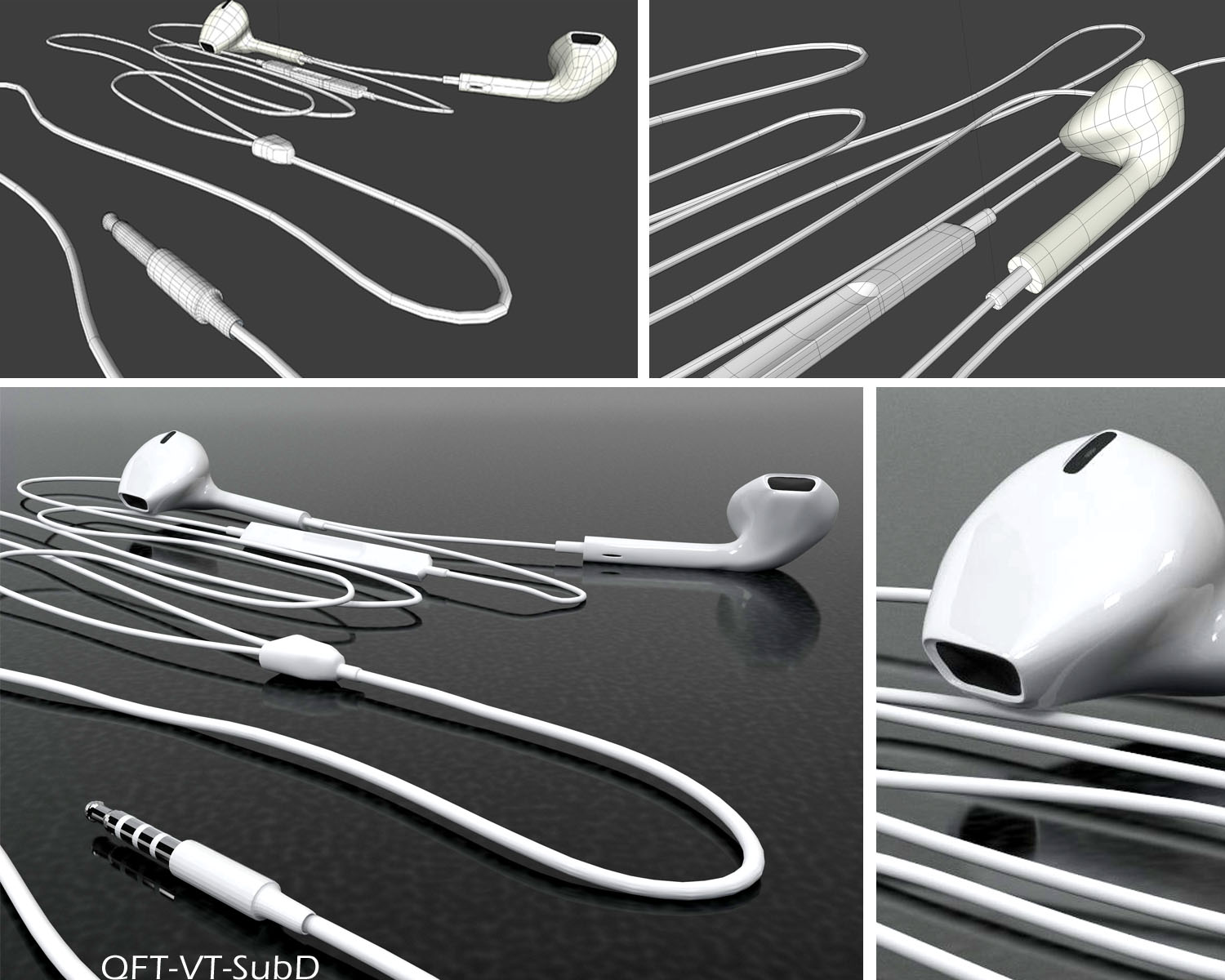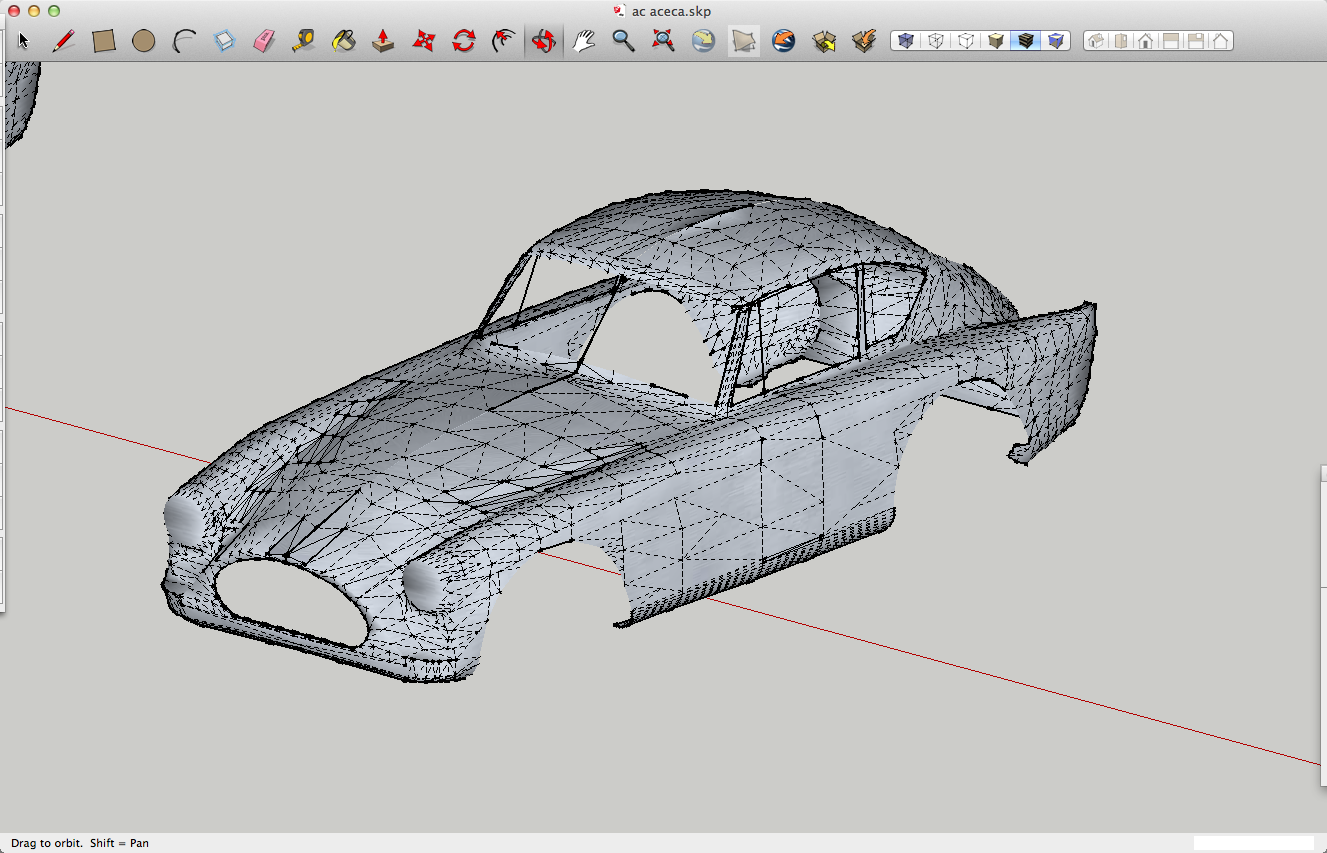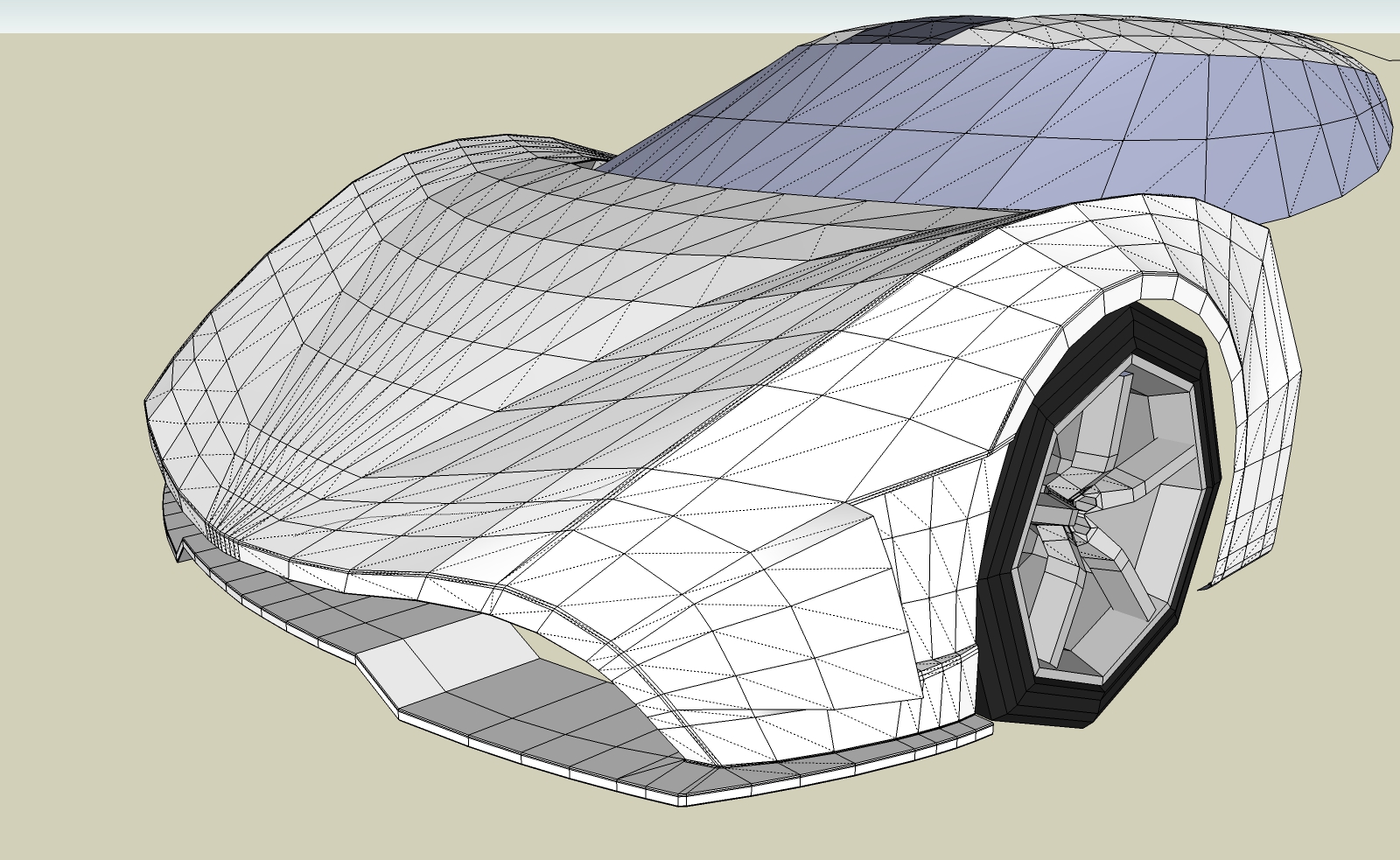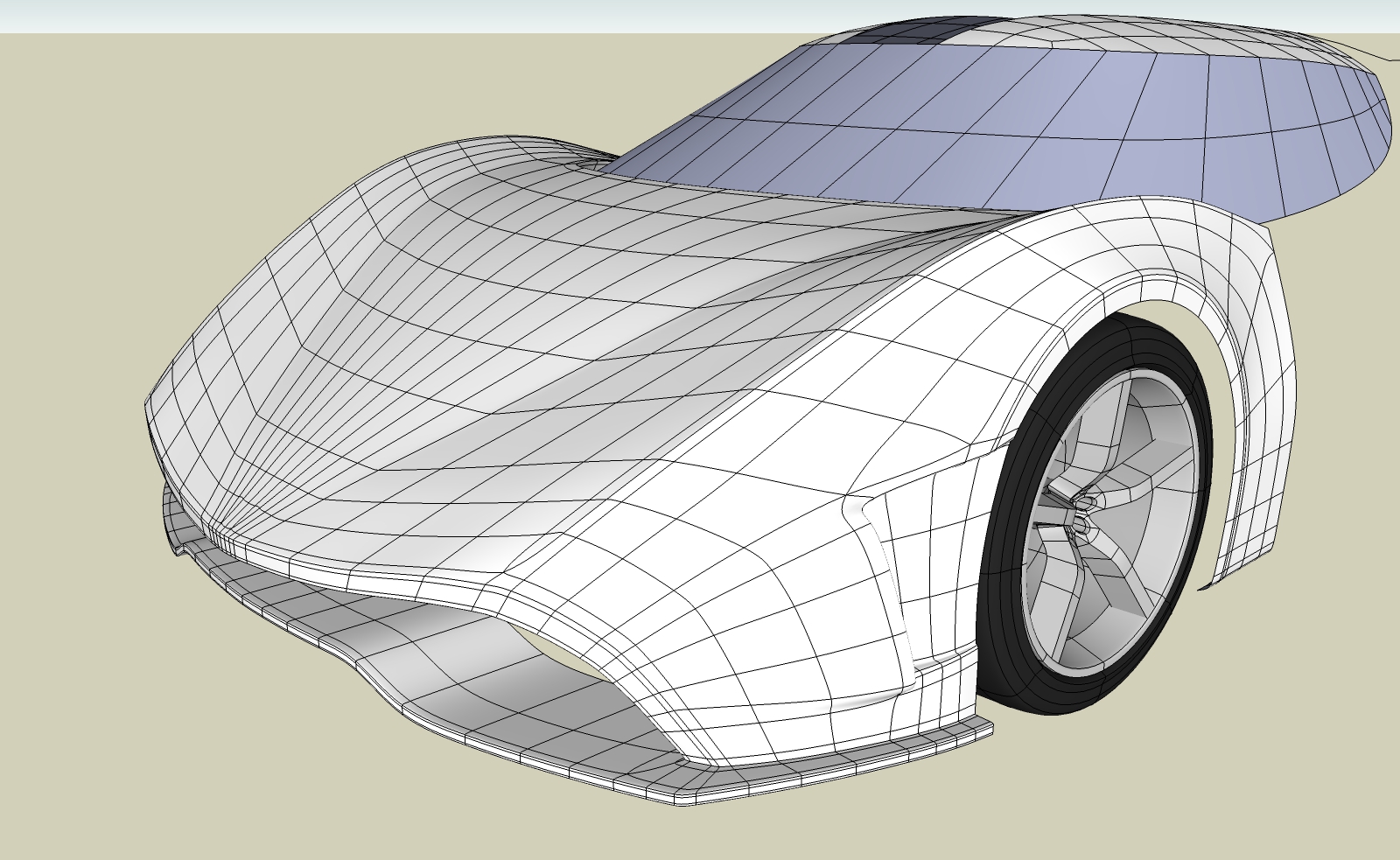SubD examples and models
-
The Uv's are kept, but the faces are subdivided and "deformed" so the texture warps...
-
The texture distortions aren't an issue for v2 of SUbD. It uses OpenSubDiv and it's even more awesome.
-
@rich o brien said:
The texture distortions aren't an issue for v2 of SUbD. It uses OpenSubDiv and it's even more awesome.
Oho
Is it even better than Catmull-Clark? -
Damn Rich, you're playing with all the good tools!
I've been playing with OpenSubDiv on Blender and I can't seem to find how to crease... I'm going to seach some tuts...
-
Shift + E on selected edges to crease.
Or hit N to bring up property panel. At the top you can see crease slider.
-
@thomthom said:
Indeed - one start seeing everything in quads.

to an extent it becomes an uncontrollable syndrome- seeing the world in wires... now in quads.. here's my finished earpod..

-
Howdy
Please excuse my questions if its not suitable here.I've modelled up an AC aceca body - using SU 6 - native tools only , following CaljuCotcas how to model in a car in 3D using blueprints https://www.youtube.com/watch?v=Hgrix3m1l9k
blueprint is from a 3Warehouse model called Aceca ( no model just blueprints.)
Is SubD something that could be used to smooth out and simplify the surface better than what I've modelled so far. - some of my surfaces are still too dimply.
Thanks - any advice appreciated.
Ac aceca model SU 6 with stages in different layers



-
Holy crap!!!!! Very impressed.....
-
@garydorn said:
Howdy
Is SubD something that could be used to smooth out and simplify the surface better than what I've modelled so far. - some of my surfaces are still too dimply.
Thanks - any advice appreciated.
In order for your mesh to smooth properly with SubD and even with Artisan, you need to make it a lot cleaner.
For SubD you need to make it like this .



-
Ok... again a dumb question:
to get these topologies (Cut Face A and B), is there a specific tool or can I draw them the usual way with QFT line tool?

-
@optimaforever said:
@rich o brien said:
The texture distortions aren't an issue for v2 of SUbD. It uses OpenSubDiv and it's even more awesome.
Oho
Is it even better than Catmull-Clark?OpenSubdiv uses Catmull-Clack. But with more improvements than the variants I implemented myself. In the current version of SUbD the UVs are linearly interpolated. OpenSubdiv offer some more options - though I'm still exploring exactly what that means.
-
@garydorn said:
Is SubD something that could be used to smooth out and simplify the surface better than what I've modelled so far. - some of my surfaces are still too dimply.
Car modelling has been my main interest for QFT and SUbD. You can see a test model in the beginning of this thread: http://sketchucation.com/forums/viewtopic.php?f=397%26amp;t=63826#p584865
That car you got there would be really fun to model. I've been thinking that I want to model a rounder car like that. (Was thinking Cobra is similar.)
-
@unknownuser said:
OpenSubdiv uses Catmull-Clack. But with more improvements than the variants I implemented myself. In the current version of SUbD the UVs are linearly interpolated. OpenSubdiv offer some more options - though I'm still exploring exactly what that means.
Something in this fashion (at 10:17)
Are you going to grant us all those options mentoned below, or concentrate on one working the best? -
@rich o brien said:
Shift + E on selected edges to crease.
Or hit N to bring up property panel. At the top you can see crease slider.
@Rich @Thomhom sorry to get a bit off topic, but neither OpenSubDiv nor the regular SubDiv in Blender seem to assume the crease.
Open subdiv doesn't allow to subdiv in edit mode so I can't interactivelly see how I'm creasing.
Of course I must be doing something wrong... That goes to show how Sketchup is intuitive for sketchup users, making all other software cumbersome to use, so again, congratulations on your work Thomthom.
There is still a big difference in SubD in Sketchup or SubD in Blender though, the control mesh UV stays within UV unwrap when you deform it, while in Sketchup I suspect it doesn't as deforming an edge or a face will make Sketchup assume it should extend the tiling:
I've shared this concern with other developers dealing with UV unwrap
 but it makes sense sharing it here too:
but it makes sense sharing it here too:Would it be possible to have this behaviour by default on a set of faces that are being used in your control mesh?

-
@rv1974 said:
Something in this fashion (at 10:17)
Are you going to grant us all those options mentoned below, or concentrate on one working the best?I'm working on exposing these options to the SUbD UI. I was thinking of trying to pick default values that makes sense most of the time - but make it easy to switch.
But need to work on the names. Like in that video the naming is weird. "Smooth (Always Sharp)" ... I mean, whut? Oxymoron descriptions that make no sense. And "Bilinear" - maybe it's just me, but I struggle to visualize what that really means - at least compared to "Smooth". So I need to figure out some better names. And I was thinking the UI would have some thumbnails to illustrate what goes on.
In the OSD docs there are some visualizations, but I'm still not quite happy with that style: http://graphics.pixar.com/opensubdiv/docs/subdivision_surfaces.html#face-varying-interpolation-rules
-
@jql said:
Would it be possible to have this behaviour by default on a set of faces that are being used in your control mesh?
Nothing exist that allow UVs to be pinned like that. Though extensions can make sure to preserve UVs like that - Vertex Tools will for instance. And QFT have a save and reload feature - such that if you only distort the mesh with any tool that mess up UVs you can restore them to the vertices.
-
-
General question:
Would this plugin or any other have any benefits (speed, reliability etc.) being part SU core code (and not as add-on)? -
@rv1974 said:
General question:
Would this plugin or any other have any benefits (speed, reliability etc.) being part SU core code (and not as add-on)?This plugins would have a benefit to API access to the viewport pipeline - as then the subdivided mesh could be sent directly to the OpenGL pipeline instead of having to regenerate SketchUp faces. Then SU would know only about the control mesh and any tool could be used to manipulate the mesh while seeing the subdivided result.
Though I have some ideas for that which might make it less of an issue.(I feel we should be having a separate thread for all of this and keep this thread about example models. Can a mod split out the recent posts?)
-
@rv1974 said:
General question:
Would this plugin or any other have any benefits (speed, reliability etc.) being part SU core code (and not as add-on)?As with all my questions with blender... I will get there eventually...
Advertisement







